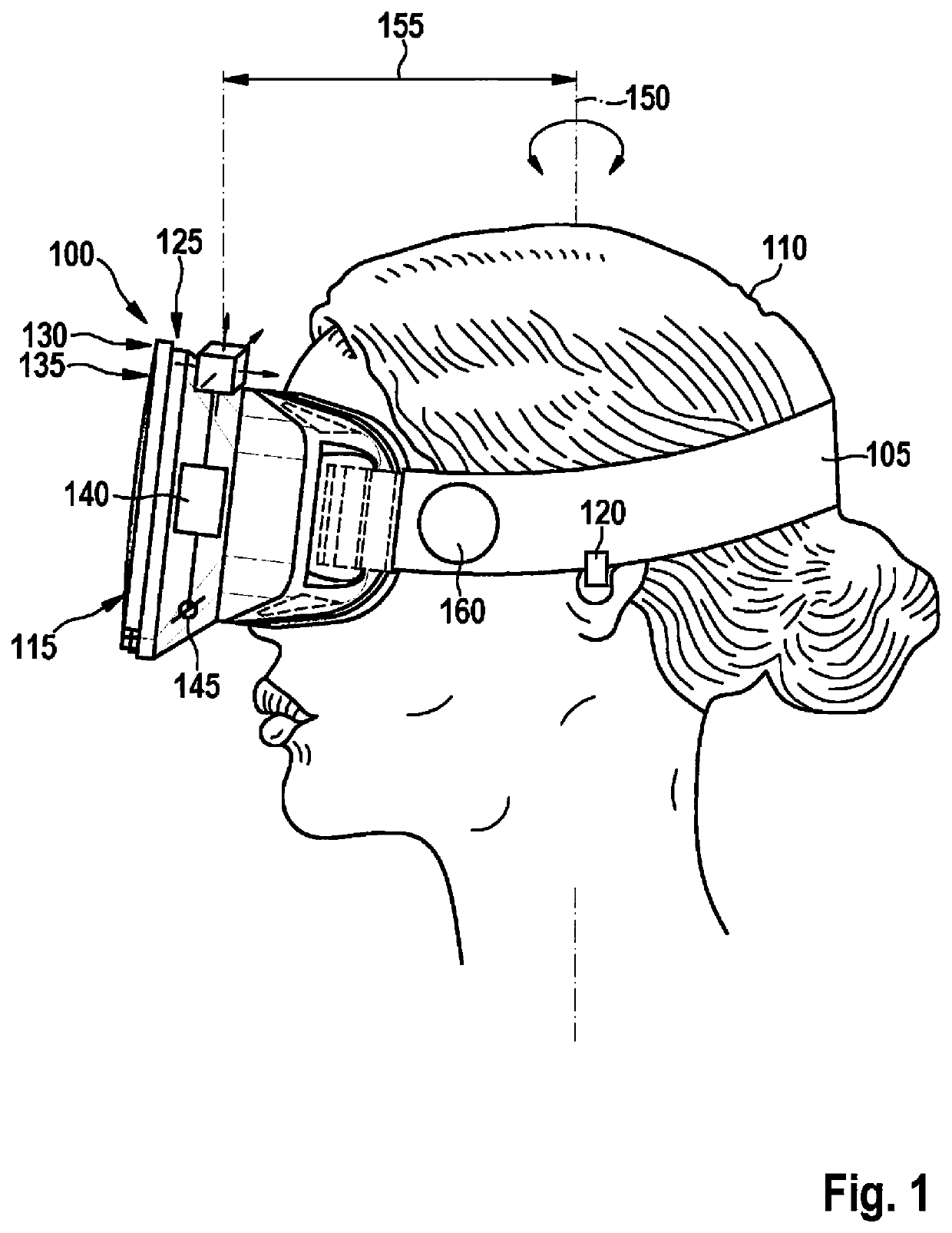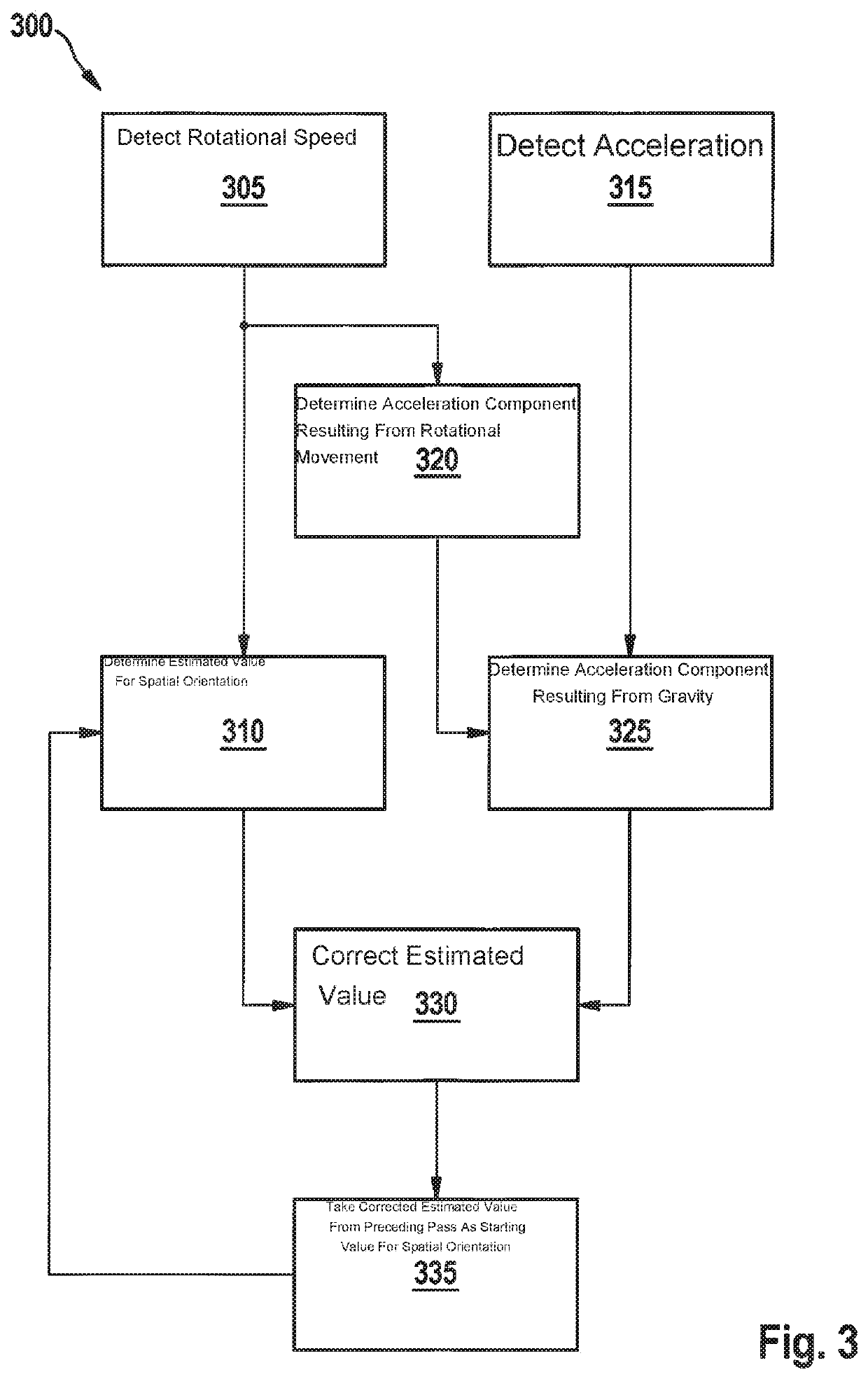Determination of a spatial orientation
a spatial orientation and determination technology, applied in the field of spatial orientation determination, can solve the problems of inexpensive gyroscopes subject to certain measuring inaccuracy, and achieve the effect of improving the realistic impression of information presented and increasing the accuracy of the determined spatial orientation
- Summary
- Abstract
- Description
- Claims
- Application Information
AI Technical Summary
Benefits of technology
Problems solved by technology
Method used
Image
Examples
Embodiment Construction
[0022]FIG. 1 shows a VR device 100 that is mounted on the head of a user 110 with the aid of a fastening device 105. The VR device preferably includes a visual output device 115 and / or an acoustic output device 120. With the aid of output devices 115, 120, stimuli may be presented to user 110 that give him / her the impression of a generated, i.e., virtual, reality. For this purpose, the stimuli are to be controlled as a function of a spatial orientation of the head of user 110.
[0023]For this purpose, a device 125 that preferably includes a first sensor 130 for determining a rotational speed and a second sensor 135 for determining an acceleration is provided on VR device 100. In addition, a processing device 140 and preferably an interface 145 for providing the determined spatial orientation are provided. One or both sensors 130, 135 may in particular be designed as micromechanical sensor(s). In the illustrated specific embodiment, the two sensors 130, 135 are integrated with one anot...
PUM
 Login to View More
Login to View More Abstract
Description
Claims
Application Information
 Login to View More
Login to View More - R&D
- Intellectual Property
- Life Sciences
- Materials
- Tech Scout
- Unparalleled Data Quality
- Higher Quality Content
- 60% Fewer Hallucinations
Browse by: Latest US Patents, China's latest patents, Technical Efficacy Thesaurus, Application Domain, Technology Topic, Popular Technical Reports.
© 2025 PatSnap. All rights reserved.Legal|Privacy policy|Modern Slavery Act Transparency Statement|Sitemap|About US| Contact US: help@patsnap.com



